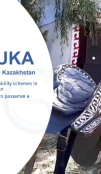Silk Roads Heritage Corridors in Afghanistan, Central Asia and Iran – International Dimension of the European Year of Cultural Heritage

Implementing organisation: UNESCO
Duration: October 2018 – 27 August 2024
Project budget: Total budget in € 3.4 mln; EU contribution in € 3.4 mln
Project partners: Ministries of Culture of the participating countries; National Commissions for UNESCO in the participating countries; National tourism development committees; Associations of Artisans Location Afghanistan, Central Asian countries, Iran
Keywords: Silk Roads, Common Heritage, Cultural Tourism
Contract number: DCI–HUM 2018 399 328
Project Description
The project aims to (1) strengthen capacities for safeguarding tangible and intangible cultural heritage; (2) raise awareness and promote the common cultural heritage on the Silk Roads; (3) use the heritage as a foundation for sustainable development, including through the development of sustainable heritage based tourism.
The project is implemented along the following main components:
- Valorization and promotion of tangible and intangible cultural heritage;
- Strengthening capacities in heritage safeguarding, protection and management for the promotion of sustainable tourism;
- Support to strengthen human and institutional capacities;
- Awareness-raising initiatives further promote and facilitate partnerships and improve communication.
Main target groups:
National and local authorities including authorities responsible for tourism development; cultural and educational organizations; Artisans; local communities; tourist associations, guides;
Main achievements to date:
-
Significant progress was made with rehabilitation of the World Heritage and cultural sites;
-
8 draft Management Plans for the sites on the World Heritage (WH) and Tentative Lists of Kyrgyzstan were developed/revised and 1 for Tajikistan;
-
Creative, crafts and entrepreneurial skills of 220 ICH bearers, including young craftspeople and capacities of 130 persons on the management of WH sites and cultural tourism were strengthened;
-
Technical expertise of 137 ICH bearers from local communities in ICH inventorying was strengthened; 12 new ICH elements were documented;
-
Capacities of 57 WH site managers, tourism experts, representatives of national authorities from CA countries on destination management planning were developed;
-
Raised awareness about the tangible and intangible cultural heritage among wider audience, particularly young people, through number of face-to-face and online activities;
-
Further opportunities were provided for strengthening networks of key stakeholders.




